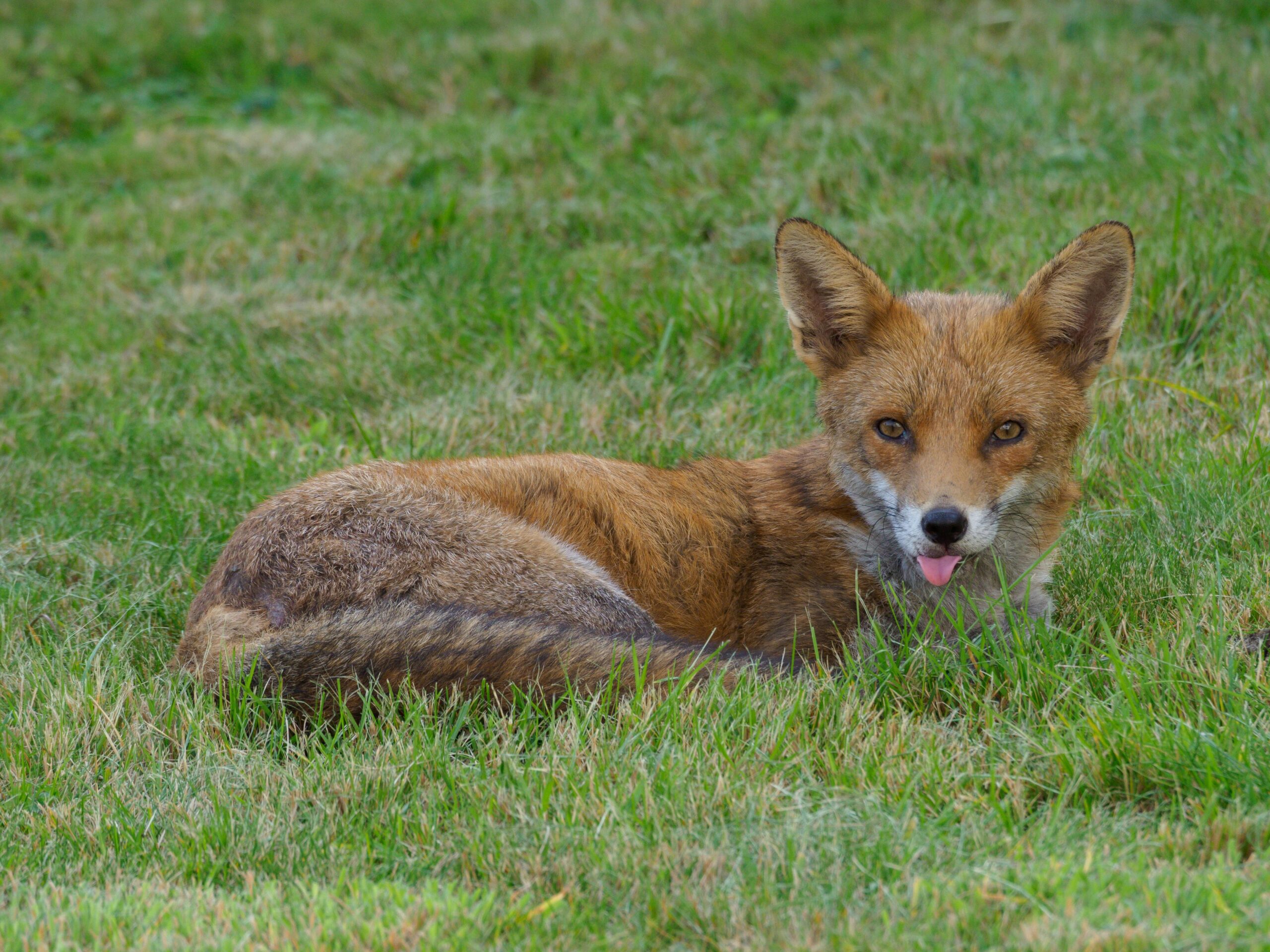The largest of the real foxes, the red fox Labrador (Vulpes vulpes) is also one of the most extensively distributed species in the order Carnivora, with distribution throughout the whole Northern Hemisphere, which includes much of North America, Europe, Asia, and certain portions of North Africa. It is the most widespread land mammal in the world after humans.
It is known for its reddish-brown fur, black legs, and white-tipped tail. It is an adaptable species that thrives in both natural and human-dominated environments, including forests, grasslands, mountains, deserts, and even urban areas. They are solitary hunters that primarily feed on small rodents, rabbits, birds, and other small game, but they are also opportunistic omnivores that will eat fruit, vegetables, fish, and even garbage.
They are skilled communicators, using their thick tails for balance and signaling, as well as scent marking to announce their presence. They typically mate in winter, with the female giving birth to a litter of 2-12 pups in the spring. Both parents care for the young until they are able to live independently in the fall. While they are sometimes hunted for sport or killed as pests, they are classified as Least Concern on the IUCN Red List due to their large population and wide distribution.
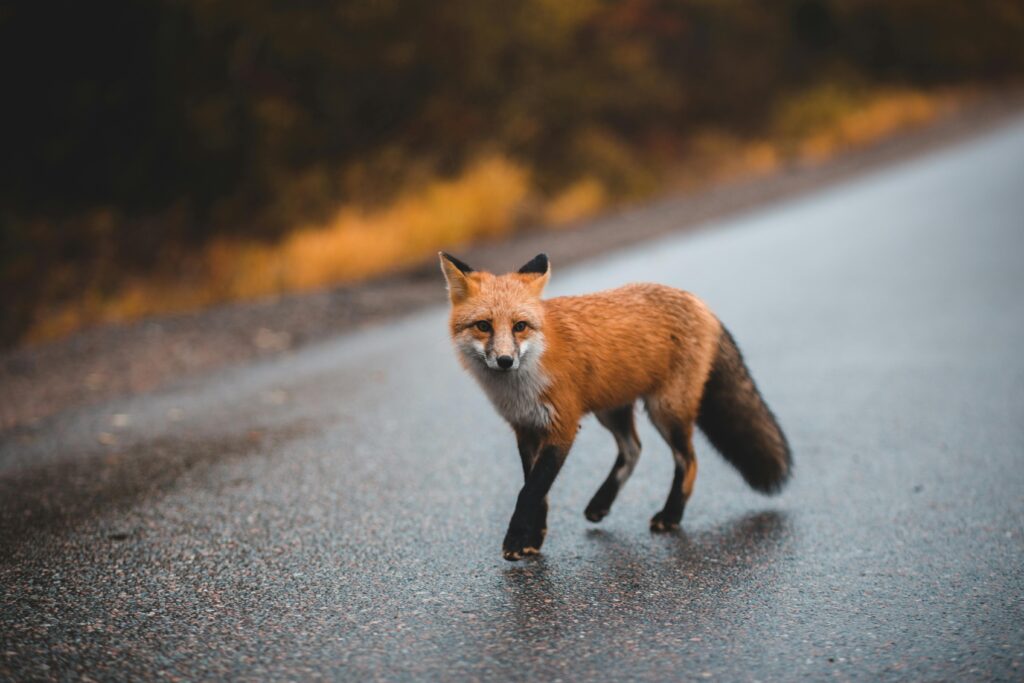
Why is it called a red fox?
It (Vulpes vulpes) is called the “red” fox due to its distinctive reddish-brown fur coloration. Here are the key reasons why it is named the “red” fox:
Coat Color:
The most obvious reason is their signature reddish-orange to reddish-brown fur coat. This vibrant coloration is the primary distinguishing feature that gives the red fox its common name.
Variation in Coat Colors:
While the reddish-brown coat is the most common, they
| red fox lab |
can also exhibit other color variations, including black (melanistic), silver, and cross phases. However, the red phase is by far the most widespread and well-known.
Adaptation to Environment:
The red coloration helps camouflage red foxes in their natural habitats, which often include forests, grasslands, and even urban areas with reddish-brown soil or vegetation. The fur color provides effective camouflage.
Distinction from Other Fox Species:
The “red” designation helps differentiate this species from other fox species, such as the gray fox, which has a more grayish coat. The red fox is the largest of the “true foxes” in the Vulpes genus.
Historical and Cultural Associations: The red fox has long been associated with red or reddish-brown fur in folklore, literature, and popular culture, further cementing the “red” moniker.
So in summary, the vivid reddish-brown fur coat is the primary reason the Vulpes vulpes species is universally known as the “red” fox, making it one of the most recognizable and iconic wild canids in the world.
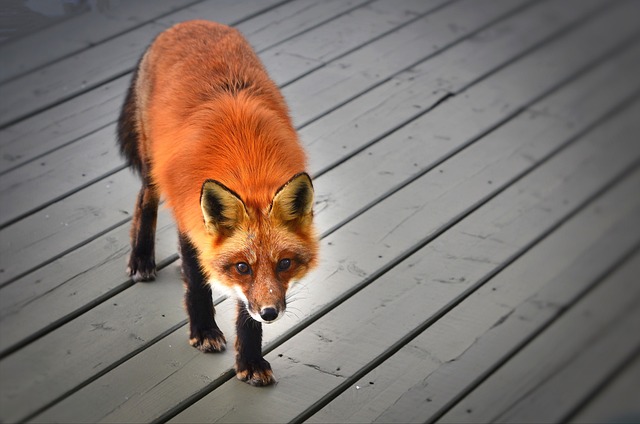
What are 4 facts about the red fox?
Here are 4 key facts about the red fox (Vulpes vulpes):
Widespread Distribution:
The red fox is the most widespread land mammal in the world after humans. It is found across the entire Northern Hemisphere, including most of North America, Europe, and Asia, as well as parts of North Africa.
Adaptability to Urban Environments:
Red foxes have adapted remarkably well to living in urban and suburban areas. They are able to thrive in cities by exploiting anthropogenic food sources and adjusting their behavior to avoid interactions with humans.
Flexible Foraging Behavior:
Red foxes are opportunistic omnivores that feed on a wide variety of prey, including small rodents, rabbits, birds, insects, and even fruits and vegetables. They are skilled at adapting their foraging strategies to take advantage of available resources.
Initial Aversion to Novel Objects:
Studies have shown that urban red foxes, similar to their rural counterparts, initially display an aversion to novel objects, even when those objects contain food. This suggests that increased access to anthropogenic resources in cities does not necessarily make urban foxes more willing to immediately exploit unfamiliar items.
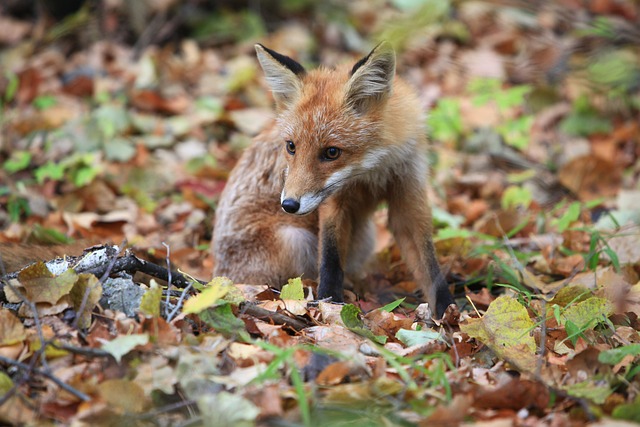
Are red foxes harmless?
Red foxes (Vulpes vulpes) are generally not considered a threat to humans, but they can potentially cause some problems:
- While too small to pose a serious threat, red foxes may steal chickens or raid garbage cans in urban areas.
- They can damage gardens and disrupt trash bins in cities.
- Most complaints about urban red foxes occur during breeding season or when kits are developing, from late January to August.
However, red foxes are not aggressive toward humans by nature. They are skilled at avoiding people and are more likely to flee than attack. Attacks on humans are extremely rare. In general, red foxes are adaptable, opportunistic omnivores that have successfully colonized many suburban and urban areas. They are known for their reddish-brown fur, black legs, and white-tipped tail.
While red foxes may cause minor nuisances in cities, they are not considered dangerous animals. Proper garbage management and deterrents can help prevent conflicts with urban foxes. Overall, red foxes play an important role in their ecosystems and have adapted remarkably well to living alongside humans.
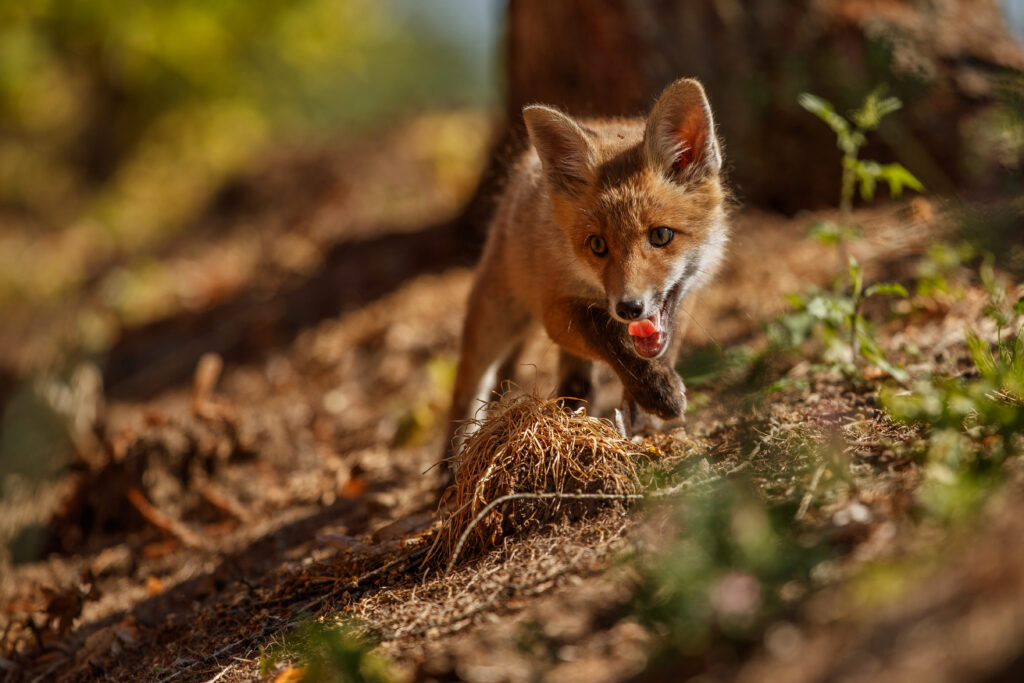
How rare is it to see a red fox?
Based on the search results, red foxes (Vulpes vulpes) are not actually that rare to see, especially in urban and suburban areas:
- The search indicate that red foxes have “extensively benefited from the presence of human habitation, and has successfully colonised many suburban and urban areas.”
- One study found that red fox distribution in England and Wales has “changed markedly within the last 25 years, with sightings submitted from 91% of urban areas previously predicted to support few or no foxes.”
- This suggests red foxes are becoming more common in urban environments.
- The search results also mention that urban red foxes are “most active at dusk and dawn, doing most of their hunting and scavenging at these times. Although it is rare to see them in the daytime, they can occasionally be seen sunning on sheds or house roofs.”
- This indicates they are present, even if not always visible.
- One study used a “media-based citizen science approach” to gather a large national database of red fox sightings in Great Britain, showing they are widespread and frequently spotted by the public.
So in summary, while red foxes may not be seen constantly, they are actually quite common, especially in urban and suburban areas where they have adapted well to living alongside humans. Sightings may be more frequent at dawn and dusk, but they are no longer considered a rare or elusive animal in many parts of their range. Their adaptability has allowed red foxes to thrive in human-modified landscapes.
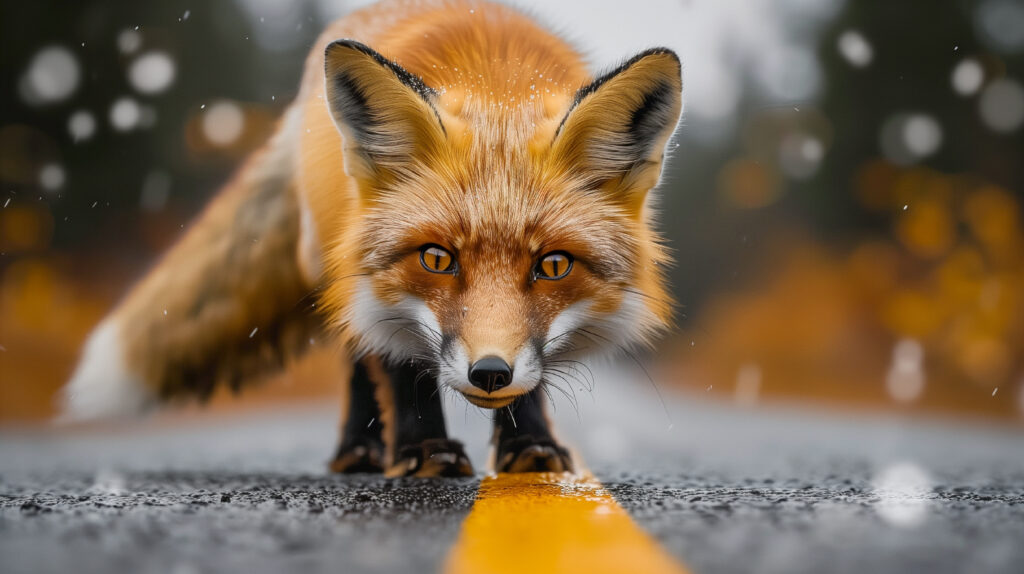
What adjustments have red foxes made to live in cities?
The red fox (Vulpes vulpes) has adapted to urban environments in several key ways: Red foxes have become more nocturnal in cities, adjusting their activity patterns to avoid interactions with humans during periods of high human activity. They are also more confident and bold in urban areas compared to peri-urban environments, likely due to the availability of novel habitats and anthropogenic resources.
Urban red foxes have adapted their foraging strategies to exploit anthropogenic food sources, such as scavenging from garbage cans or hunting small mammals in urban parks. Their diet still consists primarily of natural prey like rodents, birds and invertebrates, but human-provided food is becoming a more significant supplement. Population densities of red foxes are higher in cities due to the concentrated availability of resources, with smaller home ranges compared to rural foxes.
However, urban foxes still avoid direct contact with humans and human activity in both urban and peri-urban areas. The flexibility and adaptability of red foxes has allowed them to thrive in cities, with populations increasing as they learn to exploit the resources and habitats available. While some conflicts can arise, urban red foxes are generally shy and elusive, posing little risk to humans. Their presence provides an opportunity for people to appreciate wildlife in cities.

What is red fox lab?
A Red Fox Lab, often referred to as a Red Labrador Retriever, is a variation of the Labrador Retriever breed known for its distinct reddish coat color. This coat color is a shade of yellow, ranging from light golden to a dark, almost reddish-brown, which gives the dog its name. Here are some key points about Red Fox Labs:
Breed Origin:
They are part of the Labrador Retriever breed, which originated in Newfoundland, Canada, and was developed in the United Kingdom.
Coat Color:
The red or fox red color is considered a shade of the yellow Labrador, not a separate color category by kennel clubs like the American Kennel Club (AKC). It’s simply a darker variant of the traditional yellow coat.
Physical Characteristics:
Red Fox Labs have the same physical traits as other Labradors. They are medium to large dogs, with a strong and athletic build, broad heads, and otter-like tails.
Temperament:
They share the same temperament as other Labrador Retrievers. They are known for being friendly, outgoing, and high-spirited. They make excellent family pets and are also highly trainable, making them suitable for various roles, including service work, hunting, and competitive obedience.
Popularity:
While the black and yellow Labradors are more common, the Red Fox Lab has gained popularity due to its unique and striking coat color.
Health:
Like all Labradors, Red Fox Labs can be prone to certain health issues, including hip dysplasia, elbow dysplasia, and progressive retinal atrophy. A healthy lifestyle and routine veterinary examinations can help reduce these hazards.
Overall, the Red Fox Lab is a beautiful and affectionate dog that retains all the wonderful characteristics of the Labrador Retriever breed, with the added distinction of its unique coat color.
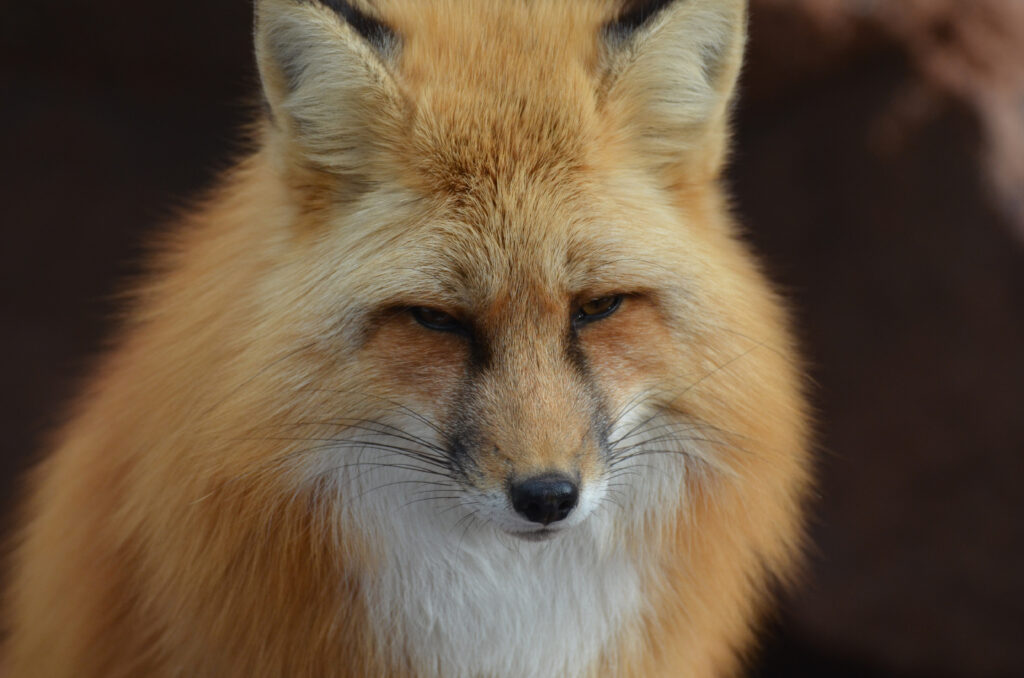
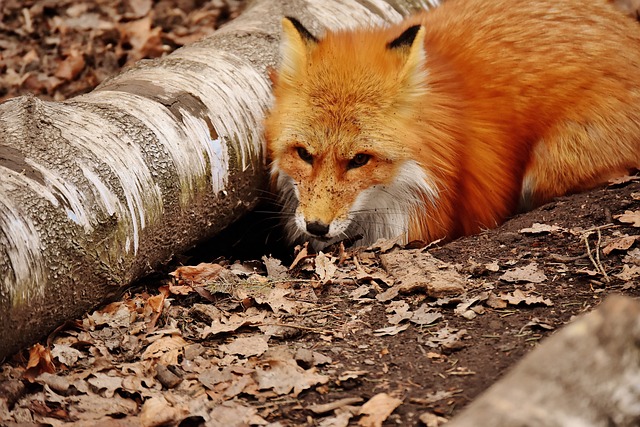
Common Health Issues faced by Red Fox Labs.
The common health issues faced by Red Fox Labs include:
Hip and elbow dysplasia:
Red Fox Labs can sometimes have problems with their hips or elbows, which can make it difficult for them to move around comfortably. Providing them with a cozy place to rest and regular exercise can help keep their joints healthy.
Eye issues:
Some Red Fox Labs may develop eye problems as they get older, such as trouble with their eyesight. Regular vet check-ups are important to detect and address any eye-related issues early on.
Obesity:
Red Fox Labs love to eat, so it’s important to monitor their food intake and make sure they don’t become overweight. Regular exercise and sensible portion control can help prevent obesity.
Ear infections:
Due to their floppy ears, Red Fox Labs are prone to ear infections. Keeping their ears clean and dry can help prevent this issue.
Allergies:
Like humans, Red Fox Labs can develop allergies to things like pollen or certain foods. Itching, skin irritation, and other allergy symptoms should be addressed with the vet.
Bloating and stomach problems:
Red Fox Labs can experience bloating, where their stomach fills with gas and twists. Feeding them smaller meals and avoiding vigorous activity after eating can help prevent this.
Heart concerns:
Some Red Fox Labs may develop heart problems, so monitoring for symptoms like coughing or breathing difficulties is important.
Dental issues:
Regular teeth cleaning are necessary to prevent plaque buildup and gum disease in Red Fox Labs.
Joint pain:
As Red Fox Labs age, they may experience joint pain, especially in the hips and elbows. Providing soft bedding and avoiding strenuous activities can help manage this.
By being aware of these common health issues and taking proactive steps to prevent and manage them, Red Fox Lab owners can help ensure their beloved pets live long, healthy, and happy lives.
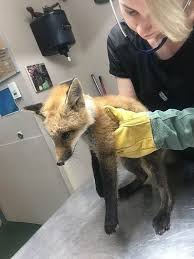
Recommended check-ups Frequency for a Red Fox Lab.
Here is the recommended frequency for taking a Red Fox Lab to the vet for check-ups:
Puppy Stage:
Red Fox Lab puppies should see the vet monthly for the first few months of their life. This allows the vet to administer the full series of vaccinations and monitor the puppy’s growth and development.
Adult Dogs:
Once the Red Fox Lab reaches adulthood, annual wellness exams are recommended. These yearly check-ups allow the vet to detect any potential health issues early and monitor the dog’s overall condition.
Senior Dogs:
As the Red Fox Lab reaches their senior years, typically around 7-9 years old depending on size, biannual (twice yearly) wellness exams are recommended. This increased frequency helps the vet stay on top of any age-related health concerns.
Additional Considerations:
- If the Red Fox Lab has a history of any health issues or conditions, the vet may recommend more frequent check-ups, such as twice a year.
- The vet may also recommend additional testing like blood work or x-rays, especially for senior dogs, to screen for underlying problems.
- It’s important to monitor the Red Fox Lab closely and make vet appointments promptly if you notice any changes in their health, behavior, or appearance.
By following these guidelines for routine vet visits, Red Fox Lab owners can help ensure their beloved pets receive the preventative care and early detection needed to maintain their health and longevity.
Key Tips to help a Red Fox Lab avoid exercise-induced collapse.
Here are some key tips to help a Red Fox Lab avoid exercise-induced collapse:
Limit intense exercise:
Red Fox Labs are prone to exercise-induced collapse, so it’s important to avoid prolonged, strenuous activities like upland bird hunting, repetitive retrieving, long runs, and intense play. Instead, focus on moderate exercise like walks, short play sessions, and swimming.
Monitor for early signs:
Be vigilant for early signs of weakness or collapse, such as a rocking gait, dragging back legs, or a wide-based stance. At the first sign of trouble, stop the activity immediately and allow your dog to rest.
Provide water and cooling:
If your Red Fox Lab does start to show signs of collapse, provide water for them to drink and spray them with cool water to help lower their body temperature.
Consider medication:
In some cases, medications prescribed by your veterinarian may help reduce the frequency or severity of exercise-induced collapse episodes.
Maintain a healthy weight:
Keeping your Red Fox Lab at an ideal body weight can help prevent obesity, which can exacerbate exercise-induced collapse.
Choose a reputable breeder:
When getting a Red Fox Lab, choose a breeder who screens for the genetic condition and only breeds dogs that are not affected.
Perform genetic testing:
If your veterinarian suspects exercise-induced collapse, they may recommend a genetic test to confirm the diagnosis.
By being proactive about monitoring your Red Fox Lab’s exercise, providing appropriate care, and working closely with your veterinarian, you can help prevent and manage episodes of exercise-induced collapse in this breed. The key is recognizing the early warning signs and acting quickly to stop the activity and cool down your dog.
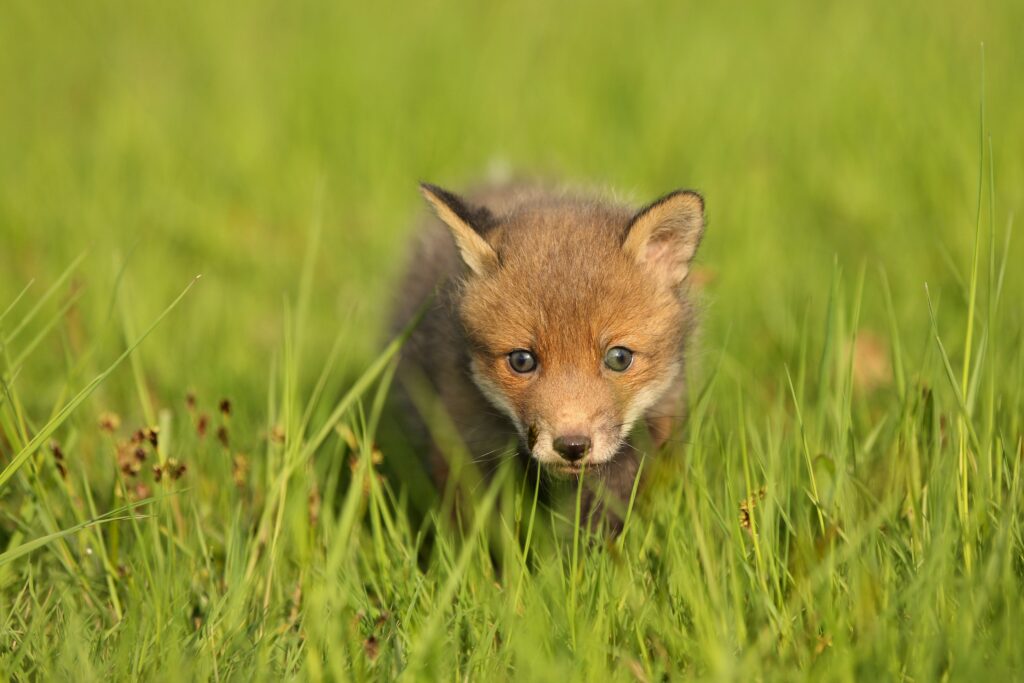
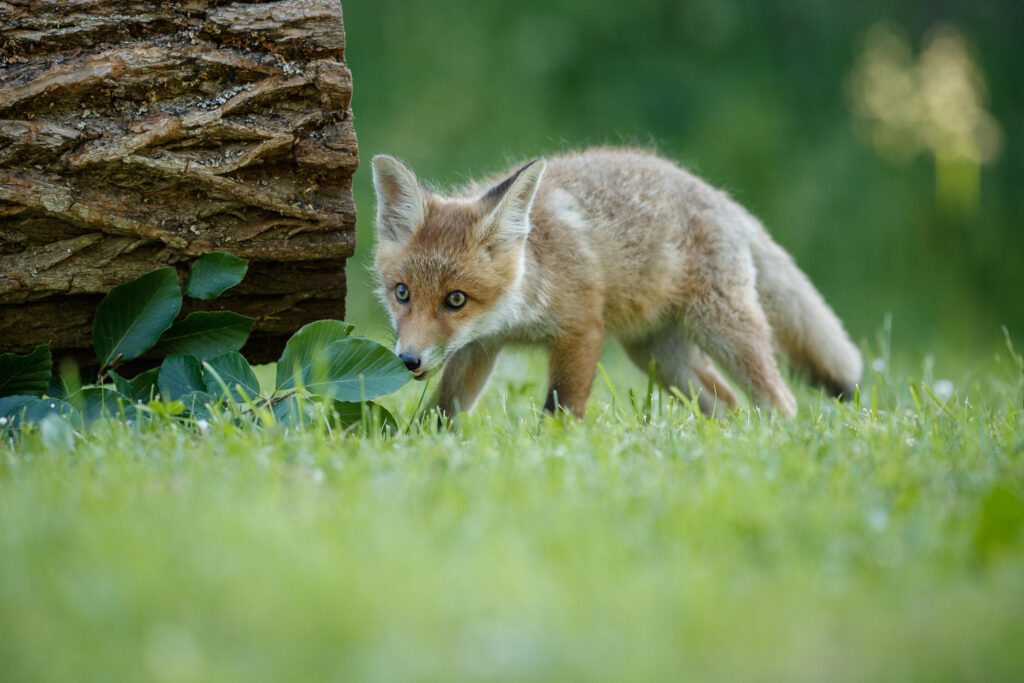
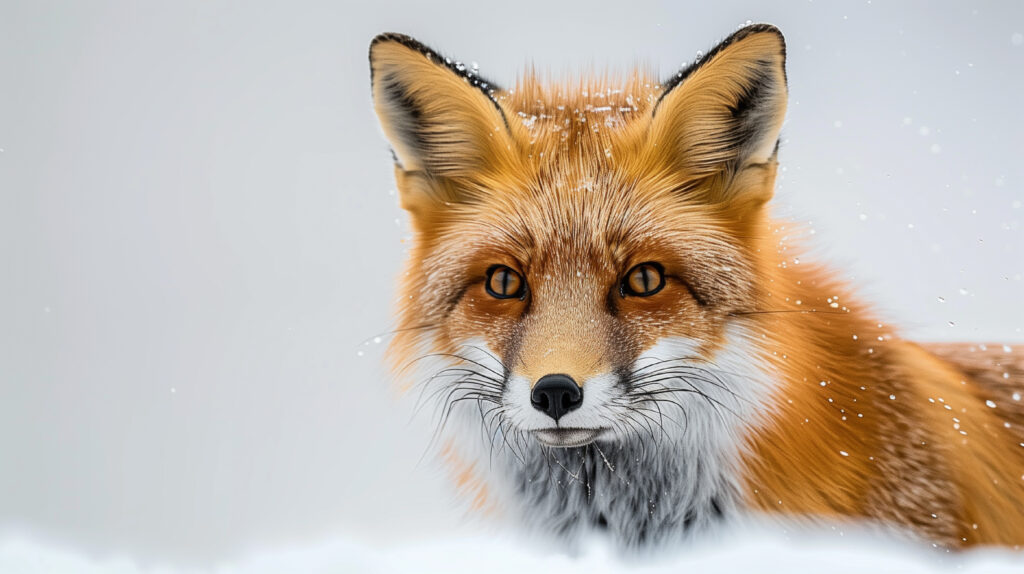
Recommended grooming routines for Red Fox Labs at different stages of life.
Here are some recommended grooming routines for Red Fox Labs at different life stages:
Puppy Stage:
- Brush their coat at least 1-2 times per week to remove loose hair and prevent matting.
- Trim their nails regularly as they grow quickly during the puppy phase.
- Introduce ear cleaning and teeth brushing to get them accustomed to these grooming tasks.
- Bathe them as needed, using a gentle, dog-safe shampoo.
Adult Dogs:
- Brush their coat 1-2 times per week to maintain a healthy, shiny appearance.
- To avoid overgrowth, trim their nails every four to six weeks.
- Clean their ears monthly to prevent infections.
- Brush their teeth 2-3 times per week to promote dental health.
- Bathe them every 4-8 weeks, or as needed to keep their coat clean.
Senior Dogs:
- Brush their coat 2-3 times per week as their coat may become more prone to matting as they age.
- Trim their nails more frequently, every 2-4 weeks, as their nails tend to grow faster.
- Clean their ears monthly and watch for any signs of infection.
- Brush their teeth daily to prevent dental disease.
- Bathe them every 4-6 weeks, using a moisturizing shampoo to prevent dry skin.
Consistent grooming is essential for maintaining the Red Fox Lab’s short, dense coat and overall health. Establishing a regular grooming routine from a young age can help make these tasks easier and more comfortable for your dog throughout their life.
Specific grooming techniques for Red Fox Lab puppies
Here are some key grooming techniques recommended for Red Fox Lab puppies:
Brushing:
- Brush their coat at least 1-2 times per week to remove loose hair and prevent matting.
- This helps distribute the natural oils and promotes a healthy, shiny coat.
Nail Trimming:
- Trim their nails regularly as they grow quickly during the puppy phase.
- This prevents the nails from getting too long and causing discomfort.
Ear Cleaning:
- Introduce ear cleaning early to get the puppy accustomed to the process.
- Clean their ears monthly to prevent infections.
Teeth Brushing:
- Start brushing their teeth 2-3 times per week to promote dental health.
- This lessens the risk of gum disease and plaque accumulation.
Bathing:
- Bathe Red Fox Lab puppies as needed, using a gentle, dog-safe shampoo.
- Refrain from over bathing as this might deplete the natural oils in their coat.
The key is to make grooming a positive experience for the puppy from an early age. Use treats and praise to associate grooming with good things. This will make it easier to maintain their coat, nails, ears, and teeth as they grow into adulthood. Consistent, gentle grooming is essential for the health and appearance of the Red Fox Lab’s distinctive coat.
How to ensure a Red Fox Lab gets enough socialization at different ages.
Here are some key tips to ensure proper socialization for a Red Fox Lab at different life stages:
Puppy Stage (8-16 weeks):
- Start socialization as early as 8 weeks old, when the critical socialization period begins.
- Expose your puppy to a wide variety of people, animals, sounds, and environments in a positive, controlled manner.
- Use treats and praises to create pleasant associations with new experiences.
- Avoid overwhelming the puppy or allowing uncontrolled interactions that could be frightening.
- Continue socialization throughout the 8-16 week window, as this is a crucial time for development.
Adolescent Stage (4-12 months):
- Continue introducing your Red Fox Lab to new people, animals, and environments, but with more structure.
- Practice obedience training to teach your dog how to behave appropriately in social situations.
- Enroll in puppy socialization classes to allow supervised interactions with other dogs.
- Take your dog on outings to pet-friendly public places like parks or stores.
- Be patient and consistent, as adolescence can be a challenging time.
Adult Stage (1 year+):
- Maintain socialization by regularly exposing your Red Fox Lab to new experiences.
- Reinforce good behavior with rewards when meeting new people or animals.
- Consider therapy dog training if you want to take your dog to visit hospitals, schools, or other facilities.
- Supervise all interactions, as adult dogs may be less tolerant of inappropriate behavior from other dogs or people.
- Continue obedience training to ensure your Red Fox Lab remains well-mannered in social settings.
The key is to start socialization early, use positive reinforcement, and gradually expose your Red Fox Lab to a wide variety of experiences throughout their life. This will help ensure they develop into a confident, friendly, and well-adjusted companion.


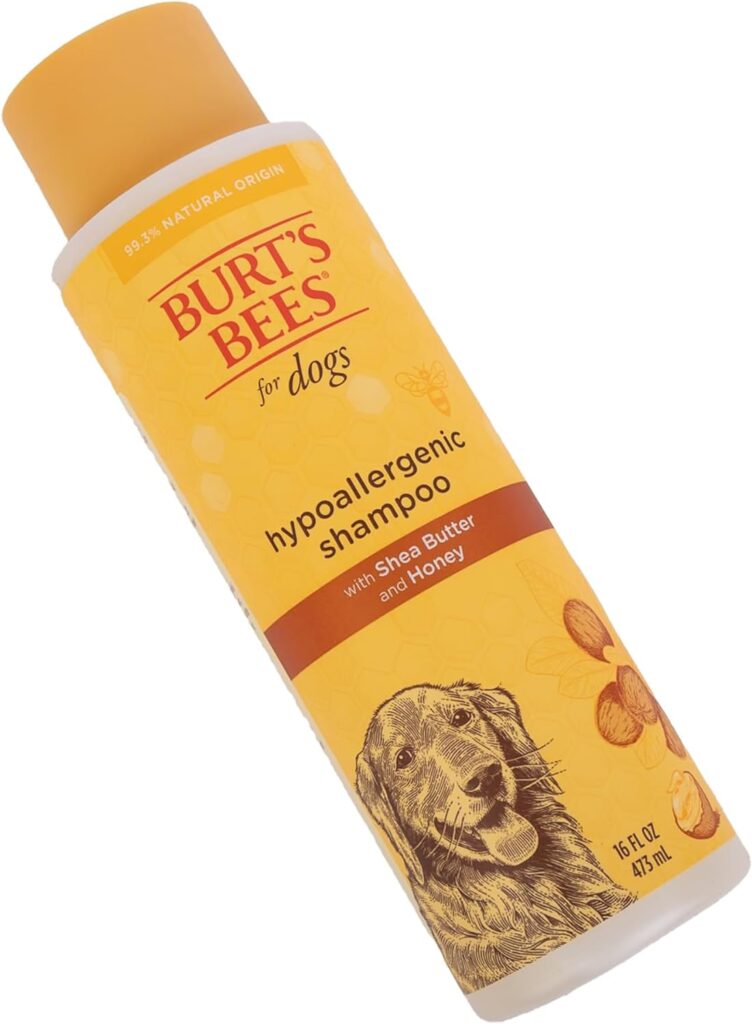
Specific Shampoos recommended for Red Fox Lab puppies.
Here are some key recommendations for shampoos suitable for Red Fox Lab puppies:
Burt’s Bees Puppy Tear less 2-in-1 Shampoo:
- Formulated specifically for puppies with sensitive skin.
- Contains natural ingredients like buttermilk, colloidal oatmeal, honey, and beeswax.
- Gently cleanses and conditions the coat without irritation.
Earth bath All Natural Pet Shampoo:
- Aloe Vera and oats are included to hydrate and calm the skin.
- Gentle, biodegradable, and cruelty-free formula.
- Suitable for dogs with allergies or sensitive skin.
Mighty Petz Oatmeal Dog Shampoo and Conditioner:
- Tear-free, soap less formula.
- Rich, creamy lather to gently clean the coat.
- Oatmeal and other natural ingredients provide moisture and relief for dry, itchy skin.
Burt’s Bees Hypoallergenic Dog Shampoo:
- Made with all-natural, organic ingredients.
- Hypoallergenic and gentle for dogs with sensitivities.
- Contains aloe and lemongrass to soothe the skin.
The key considerations for Red Fox Lab puppies are finding a shampoo that is gentle, moisturizing, and free of harsh chemicals that could irritate their sensitive skin. Oatmeal-based and hypoallergenic formulas are often recommended for this breed. Consulting with your veterinarian can also help ensure you choose the best shampoo for your puppy’s individual needs.
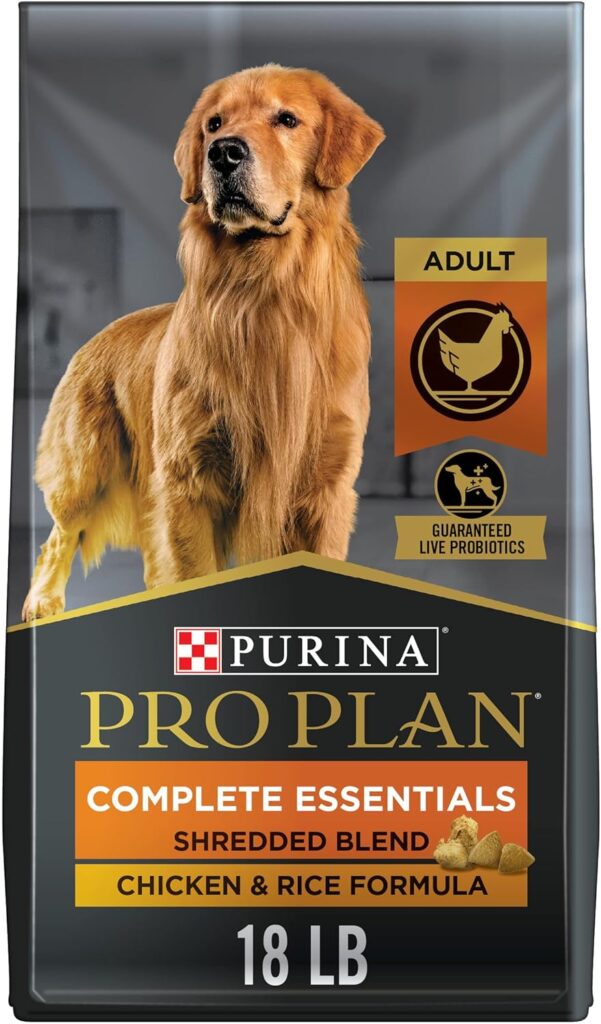

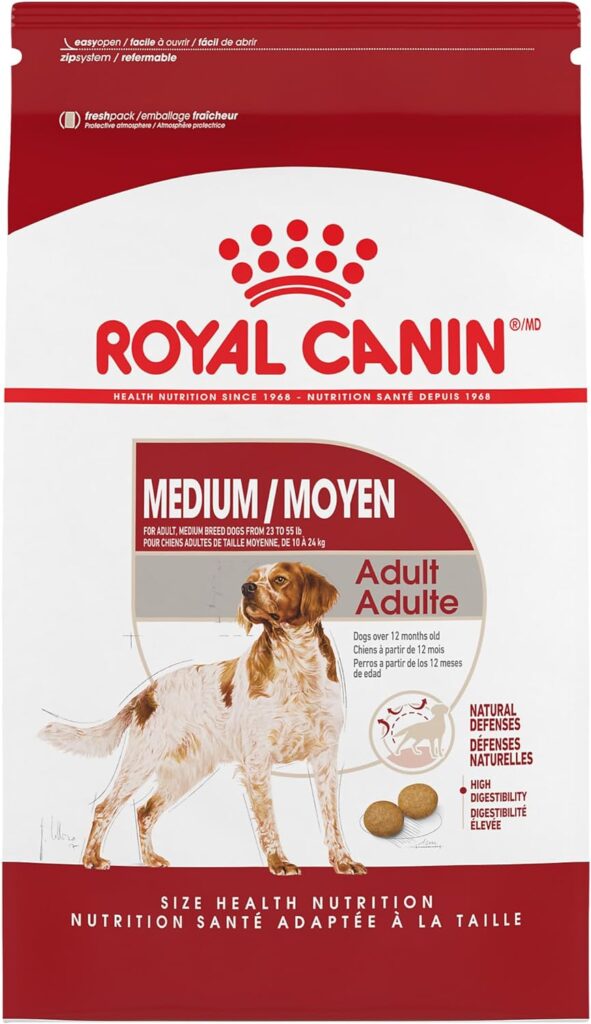
Specific Food Brands recommended for Red Fox Lab puppies.
Here are some specific puppy food brands that are recommended for Red Fox Lab puppies:
Purina Pro Plan:
This brand is the top recommendation from breeders. It provides high-quality nutrition at a reasonable price point. The search results mention that Purina Pro Plan was formerly known as Purina Focus.
Hill’s Science Diet:
Another popular choice that falls in the mid-range price category. Hill’s Science Diet is a brand that many vets recommend.
Royal Canin:
While more expensive, Royal Canin is a top quality food that is often recommended for puppies with special dietary needs or sensitive stomachs. If money is not an issue, this is a wise decision.
The key is to look for a puppy food that:
- Meets AAFCO standards for complete and balanced nutrition.
- Has the appropriate nutrient profile for a large breed puppy.
- Fits within your budget so you can stick with it long-term.
Consulting with your veterinarian can also help determine if your Red Fox Lab puppy has any special dietary requirements. But in general, Purina Pro Plan, Hill’s Science Diet, and Royal Canin are all reputable brands that are well-suited for this breed.
Contact Us for any Question related to this Article.
Frequently Asked Questions
What are the common health issues faced by Red Fox Labs?
Red Fox Labs can face several health issues, including:
- Dysplasia of the elbow and hip, which may result in joint issues.
- Eye issues like vision problems as they age.
- Obesity if overfed.
- Ear infections due to their floppy ears.
- Allergies to specific foods or substances, such as pollen.
- Bloating and stomach problems.
- Heart concerns.
- Dental issues like plaque buildup and gum disease.
- Joint pain, especially in the hips and elbows, as they age Regular vet check-ups, proper diet, and exercise can help prevent and manage these issues.
How often should I take my Red Fox Lab to the vet?
- Puppies should see the vet monthly for the first few months for vaccinations and growth monitoring.
- Adult dogs need annual wellness exams.
- Senior dogs (7-9+ years) require biannual check-ups to monitor age-related health concerns.
- Dogs with health conditions may need more frequent visits as recommended by the vet Prompt vet care is important if you notice any changes in your Red Fox Lab’s health or behavior.
What grooming routines are recommended at different life stages?
Puppy:
- Brush 1-2 times/week to remove loose hair and prevent matting.
- Trim nails regularly as they grow quickly.
- Introduce ear cleaning and teeth brushing.
Bathe as needed with gentle shampoo Adult:
- Brush 1-2 times/week for a healthy coat.
- Trim nails every 4-6 weeks.
- Clean ears monthly.
- Brush teeth 2-3 times/week.
Bathe every 4-8 weeks Senior:
- Brush 2-3 times/week as coat may mat more.
- Trim nails every 2-4 weeks as they grow faster.
- Clean ears monthly.
- To stop dental disease, brush their teeth every day.
- Bathe every 4-6 weeks with moisturizing shampoo Consistent grooming from a young age makes it easier on both you and your Red Fox Lab.
How can I ensure my Red Fox Lab gets enough socialization?
Puppy (8-16 weeks):
- Start socialization at 8 weeks in a positive, controlled way.
- Expose to many people, animals, sounds, environments.
- Use treats and praise for pleasant associations.
Avoid overwhelming the puppy Adolescent (4-12 months):
- Continue introductions with more structure.
- Practice obedience training for good behavior.
- Enroll in puppy socialization classes.
Take outings to pet-friendly public places Adult (1 year+):
- Maintain socialization with new experiences.
- Reward good behavior when meeting new people/animals.
- Consider therapy dog training if desired.
- Supervise all interactions.
- Continue obedience training for manners Socialization helps Red Fox Labs develop into confident, friendly companions. Start early and be patient.
What are the top puppy food brands for Red Fox Labs?
The top recommended puppy food brands for Red Fox Labs are:
Purina Pro Plan: High-quality nutrition at a reasonable price, formerly known as Purina Focus.
Hill’s Science Diet: A mid-range brand many vets recommend.
Royal Canin: Top quality but more expensive, good for special dietary needs Look for a puppy food that:
- Meets AAFCO standards for complete nutrition.
- Has the right nutrient profile for a large breed puppy.
- Fits your budget for long-term feeding.
Consult your vet if your puppy has any special dietary requirements. But these three brands are all excellent choices for Red Fox Lab puppies.
How often do red foxes reproduce?
Red foxes typically breed once a year, with the breeding season occurring in late winter to early spring. After a gestation period of about 51-53 days, female foxes (vixens) give birth to a litter of 1-12 kits, with an average of 4-5 kits per litter. The kits are born blind and helpless, but they develop quickly. They begin to venture out of the den at around 3-4 weeks old and are weaned by 6-8 weeks. By 4-5 months old, the kits are independent and may disperse to establish their own territories.
How long do red foxes live?
In the wild, red foxes typically live 2-5 years on average. However, some individuals may live up to 10-12 years old. In captivity, red foxes have been known to live up to 14 years. Factors that influence a red fox’s lifespan include:
- Habitat and food availability
- Exposure to disease and parasites
- Interactions with humans and other predators
- Accidents and injuries
Urban red foxes may have a slightly higher life expectancy compared to their rural counterparts due to the availability of food resources and lower predation risk. However, they face other threats like vehicle collisions and conflicts with humans.
Are red foxes nocturnal?
Red foxes are not strictly nocturnal, but they are more active at night and during the crepuscular hours of dawn and dusk. This is an adaptation to avoid interactions with humans and other predators. In urban areas, red foxes have become more tolerant of human activity and may be active during the day as well. However, they still tend to be most active at night when human activity is lower. Red foxes are solitary hunters and are known for their excellent hearing, keen eyesight, and strong sense of smell, which help them locate prey and navigate their environment at night.
Do red foxes make good pets?
Red foxes do not make good pets for most people. While they may appear cute and cuddly when young, red foxes are wild animals with specific needs and behaviors that are difficult to meet in a domestic setting. Some key reasons why red foxes are not suitable pets:
- They require a large, specialized enclosure and diet that is challenging to provide in a home environment.
- Red foxes are territorial and may become aggressive, especially as they mature.
- Owning a red fox is illegal in many areas without a special permit.
- Red foxes are susceptible to diseases that can be transmitted to humans and other pets.
While it may be tempting to keep a red fox as a pet, it is important to remember that they are wild animals that belong in their natural habitats. Responsible wildlife conservation and animal welfare should be the priority.
How do red foxes communicate?
Red foxes use a variety of vocalizations and body language to communicate with each other. Their most well-known vocalization is the high-pitched, yapping bark, which they use to alert other foxes to danger or to locate their pack members. Other common red fox vocalizations include:
- Whines and whimpers, often used by kits begging for food
- Growls and snarls, used to express aggression or warn off intruders
- Screams and wails, typically heard during the breeding season
Red foxes also rely on body language and scent marking to communicate. They use their bushy tails for balance and signaling, and they mark their territory with urine and feces. Facial expressions, such as a wrinkled nose or flattened ears, can also convey a fox’s mood and intentions.
What do red foxes eat?
Red foxes are opportunistic omnivores, meaning they will eat a wide variety of foods depending on what is available. Their diet typically consists of:
- Small mammals, such as rodents, rabbits, and hares
- Birds and their eggs
- Insects and other invertebrates
- Fruits, berries, and other plant matter
- Carrion (dead animals)
In urban areas, red foxes may also scavenge for food in garbage cans or raid chicken coops. They are skilled hunters and can catch fast-moving prey like rabbits and voles. Red foxes have a keen sense of hearing and can locate prey by sound alone. They often hunt by pouncing on their prey from a crouched position or by stalking and chasing it down.
How do red foxes adapt to urban environments?
Red foxes have shown remarkable adaptability in colonizing urban and suburban areas. Some of the key ways they adapt include:
- Adjusting their activity patterns to be more nocturnal and avoid interactions with humans
- Exploiting anthropogenic food sources, such as garbage, pet food, and compost
- Establishing dens in a variety of locations, including under sheds, decks, and even in abandoned buildings
- Becoming more tolerant of human presence and activity
- Forming higher population densities in urban areas due to the availability of resources
While red foxes may cause some nuisance issues, such as raiding garbage cans or preying on domestic animals, they generally pose little threat to humans. In fact, their presence in urban areas can be a sign of a healthy ecosystem and can provide opportunities for people to appreciate wildlife.
Are red foxes endangered?
The red fox is classified as Least Concern on the IUCN Red List of Threatened Species. This is due to their large population size, wide distribution, and ability to adapt to a variety of habitats, including urban areas. However, some subspecies and populations of red foxes may face threats, such as:
- Habitat loss and fragmentation due to human development.
- Hunting and trapping for fur or sport.
- Poisoning and other control measures aimed at reducing conflicts with humans.
- Diseases and parasites, such as mange and rabies.
In general, red foxes are not considered endangered globally, but it is important to monitor local populations and address any specific threats or conservation concerns that may arise.
